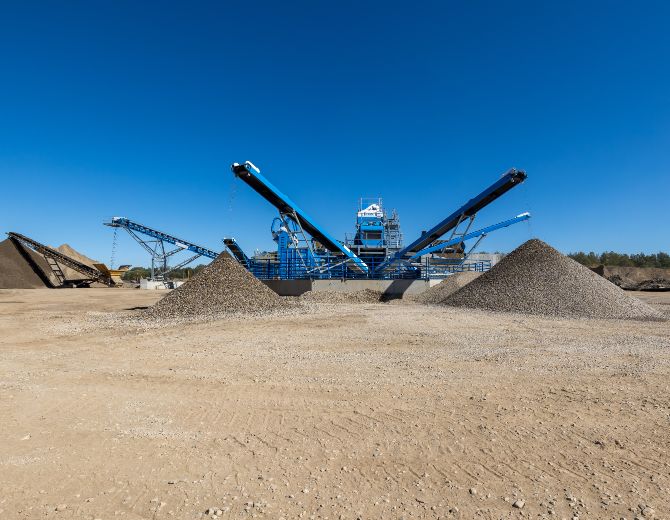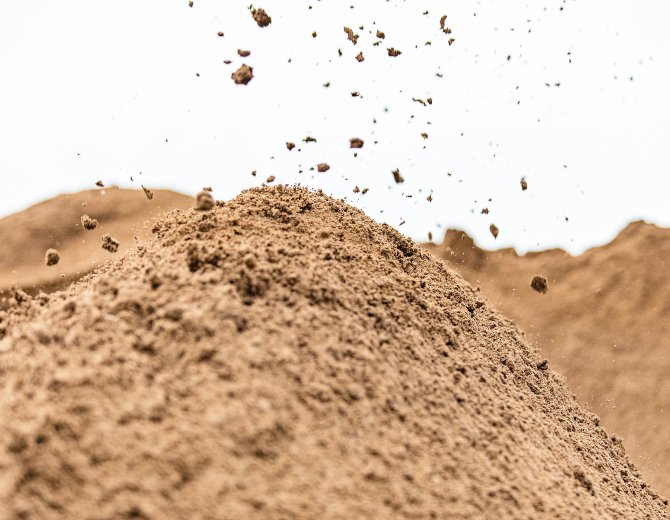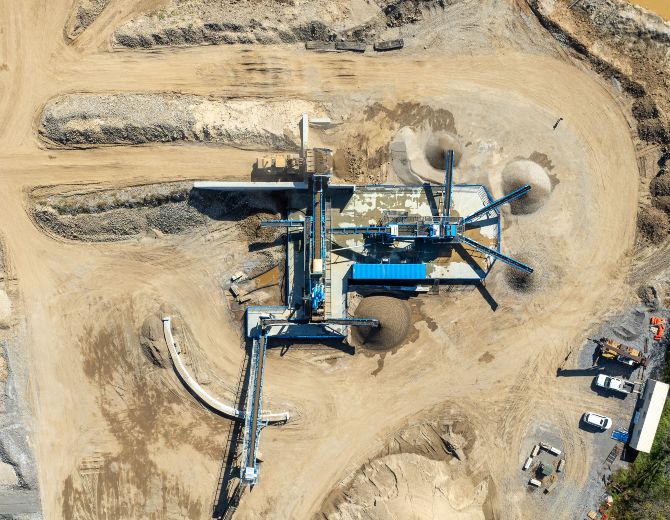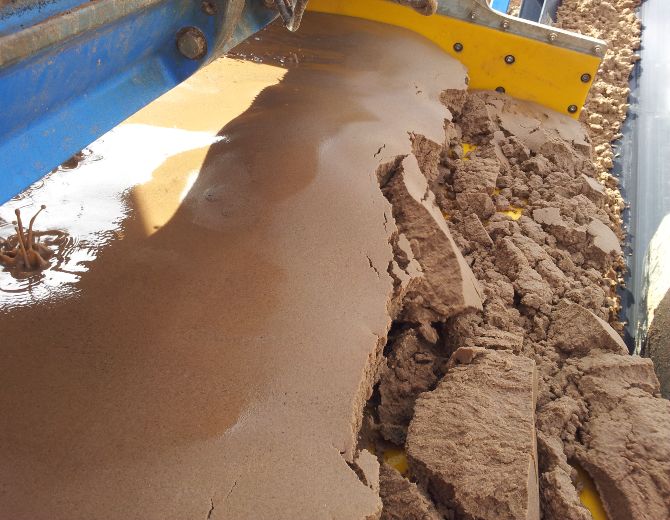A Market Deep Dive - Ohio’s Infrastructure Surge
Ohio is in the midst of its most ambitious transportation era in decades. In May 2025, voters approved $2.5 billion in bond funding via State Issue 2, earmarked for roads, bridges, and inland waterways. At the same time, the Ohio Department of Transportation has programmed a record $3.2 billion for 955 projects this year alone. These projects range from major interstate upgrades to rural bridge replacements and port improvements on Lake Erie and the Ohio River.
“In addition to public sector investment, we’re seeing a large increase in private sector investment. Even with home building down, we are seeing an increase in aggregate demand on the warehousing side of the equation and the influx of data centers in Ohio.” says Pat Jacomet, Executive Director of the Ohio Aggregates & Industrials Minerals Association.
These projects are direct investments in safety, mobility, and economic vitality. Many of Ohio’s bridges are more than 50 years old. Hundreds of road miles are overdue for repair. And with so much industry relying on freight corridors and river shipping terminals, infrastructure is not just about mobility. It’s about keeping Ohio competitive in the heart of the country’s supply chain.
We recently caught up with CDE business development manager Ronan Duffy, Mark Kuar, editor of Rock Products, Pat Jacomet, Executive Director of the Ohio Aggregates & Industrials Minerals Association (OAIMA), and Ross Duff, President of Duff Sand and Gravel, to learn more about the current state of the Ohio aggregates market.
Meeting the Surge: Aggregates Demand at a High
This unprecedented infrastructure boom puts enormous pressure on the building blocks of construction: aggregates. Spec-compliant sand, gravel, and crushed stone are needed at scale, on tight timelines, and with zero room for error.
According to Mark Kuhar, Editor of Rock Products, “Ohio is one of the top aggregate-producing states in the country. Every time the USGS publishes its rankings, Ohio is right up there. It’s a vibrant market. There’s a lot of activity, a lot of equipment being bought, and we’re on the forefront of aggregates production in the U.S. today.”
In addition to strong overall demand, Ohio’s location provides a distinct advantage. “We’re very fortunate here,” Kuhar says. “We don’t have a water shortage. With Lake Erie to the north and the Ohio River to the south, water resources are very abundant. That’s helped make wash plants a common feature in Ohio. And now, as environmental responsibility becomes a bigger focus, recycling wash water is becoming more and more prevalent, just like in other parts of the country but without the same drought-related limitations.”
Why Wet-Processing Works for Ohio
In states like Ohio where demand is high and virgin materials are more readily accessible, wet processing can play an essential role in natural sand and gravel operations. Washing plants allow businesses to maximize yield from natural deposits while consistently hitting stringent specification requirements, such as ASTM C33 concrete sand specs. Wet washing offers more control compared to dry system alternatives. As demand in Ohio grows through DOT, municipal and commercial constructions, meeting the specifications on every load is more important than ever before. Not doing so isn’t an option and can be costly for a business.
Even small improvements in yield can have a significant impact. Recovering an additional 5-10% of sellable material translates directly to increased revenue. Not to mention, doing so reduces double handling and frees up space in stockyards.
With Ohio’s ample water supply, wet processing is a smart and sustainable fit. The recirculated water reduces environmental impact while delivering a powerful return on investment (ROI) to businesses.
Ohio’s Duff Sand & Gravel
That is exactly the path Duff Sand & Gravel followed when it overhauled its operations. Based in Lewistown, Ohio, Duff Sand & Gravel has been a family-run business for over 75 years serving all of West-central Ohio. Duff was operating a traditional dry system that struggled to maintain Ohio’s increasingly tight C33 concrete sand specs, especially when feed quality fluctuated. Not only did Duff want to produce more material per year, but they needed to make sure it met specifications consistently.
In 2023, the company installed one of our modular wet-wash systems. “Since adopting CDE’s wet-wash system, we’ve increased from 400-500 tons per day to nearly 1,000 tons per day in just 2 months,” says Ross Duff, President of Duff Sand & Gravel.

The new wash plant included real-time monitoring technology that allowed Duff’s team to track and adjust performance in real time, maintain specs across varying conditions, reduce downtime, and improve output.
“Having a wash plant has allowed us to maximize efficiency and output.” Ross continues. “The plant, combined with smart technology monitoring, has allowed us to see what the production rate is and make better informed decisions.”
These improvements helped Duff boost productivity while ensuring more of the material hitting the plant was turned into in-spec product.
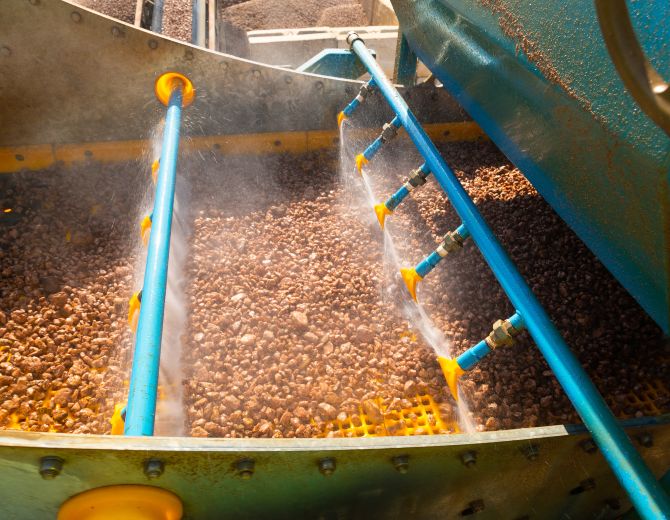
Economic and Community Impact
The impact of washing technology goes beyond performance. In Ohio, the broader aggregates industry is key for its economy, helping build roads, bridges, houses, and highways across all of its 88 counties.
According to the Ohio Aggregates & Industrial Minerals Association, the industry supports thousands of jobs statewide and plays a vital role in maintaining Ohio’s transportation network. Washing systems contribute by increasing the reliability and consistency of materials used in these projects.
“Washing technology is playing a more critical role in our producers output as specified agencies are asking for cleaner materials. Washing technologies not only ensure clean aggregates, but serve as a way to recover those fines and put those back into the stream of sellable materials.” says Pat Jacomet.
Looking Ahead
Wet processing adoption in Ohio is accelerating and is expected to play an increasingly important role in Ohio’s aggregate industry moving forward. As construction activity accelerates, producers need to keep up with the growing demand to supply high-quality products.
For natural sand and gravel sites in particular, wet processing offers a practical and scalable solution. It enables producers to recover more usable material from their feed, improve production efficiency, and deliver consistent in-spec sand and aggregates.
Operators like Duff are also exploring how to adapt their wash systems for future needs, such as processing recycled concrete aggregates (RCAs) as customers like Honda move toward sustainable construction goals.
Looking ahead, Ohio operators are exploring ways to pair wash technology with broader sustainability practices such as the circular economy, real-time performance tracking, and other environmental-friendly strategies. With environmental pressures rising and infrastructure demand showing no signs of slowing, flexible and efficient wash systems will remain a key driver of success across the state.


